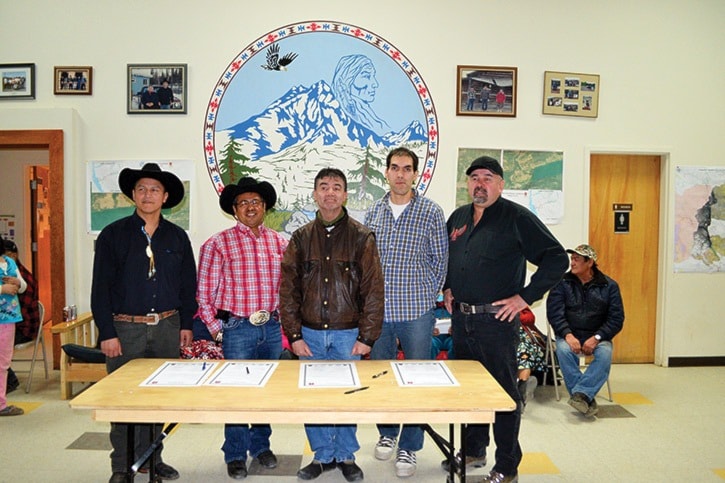Last week the 25-year-old Nemiah Declaration was enacted as law which means the use of resources within the title and larger rights area will only happen with First Nation involvement, said Xeni Gwet’in Chief Roger William Monday.
“In our declaration it says you are more than welcome to come into our territory and caretaker area and if you need to use some of our resources we have permits and licenses to help you go through that,” William told the Tribune during an interview. “It also says that nothing’s going to happen inside the Xeni Gwet’in caretaker area and inside the Tsilhqot’in territory without our involvement.”
The declaration being made into law follows the Supreme Court of Canada judgement in June 2014 that recognized Aboriginal title to approximately 1,900 square kilometres of land in the Chilcotin.
Without hesitation, Anaham Chief Joe Alphonse described it as a unique situation.
“It’s the only one of its kind in all of Canada and internationally we’re probably the only Indigenous group that owns title,” Alphonse said. “We own that title land.”
Enacting the declaration as law is an acknowledgement of the work that was done in 1989, taking it one step further and declaring it as law and giving all of those who were involved credit, Alphonse added.
“They are laws they’ve already been living by out there,” he said, adding there will be more laws to come.
“These are just baby steps. Land-use planning and all of the other stuff that comes with owning land has to be worked out while at the same time we’re trying to negotiate a larger settlement with the province and the federal government.”
Originally the declaration was developed in the 1980s after Chief Annie C. William, former chief Adam William and Roger who was on council heard concerns from elders about forest industry activities in the Nemiah Valley.
“Elders had a lot of concern and what they were seeing was impact to their culture and places they couldn’t recognize anymore because of industry,” William said.
“This declaration was put in place to protect our lands and resources, our culture, our way of life and Aboriginal rights and title.”
The Nemiah Declaration was almost like a constitution, William explained. When people were elected to the band council they had to follow it.
As a result of the declaration there were road blocks and court cases, all culminating in June’s Supreme Court decision.
Talks continue with the provincial government as the two sides hash out the letter of understanding signed six months ago, William said.
